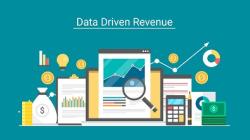Providing decision support on product offerings in an online marketplaces environment requires digging deep on the granularity of the key business drivers to evaluate success. Using a method called “A/B testing” allows an FP&A leader to easily build a framework on key criteria to better understand the various behavioural impacts that consumers apply in different scenarios and to analyse their performance.
A key function of effective FP&A is to create a data-driven decision-making culture throughout the enterprise. Data management is, therefore, a crucial part of FP&A's agenda.
As technology keeps advancing, digitalising the FP&A function and integrating it across the organisation is not out of the reach for any company. The successful companies of tomorrow will thrive by implementing data-driven and digital planning processes.
There are three key building blocks for modern Financial Planning and Analysis: Digital, Data and Analytics. What are these building blocks, and why do they matter from the FP&A perspectives?
When your financial planning and analysis (FP&A) becomes data-driven using automation and an intuitive platform with the right tools, then there's a fundamental shift. The data flows freely, it's trustworthy, and it starts to work for you. In fact, it can lead to a transformation, especially with decision-making around your organisation's finances and business strategy. But how can you reach this point?
Data today is being created and consumed at an unprecedented scale. Data science is progressing even faster, further speeding up the rate of data creation and consumption. The companies that are the first to adopt the best practices will gain a significant advantage. The rest might just perish.
Pagination
Subscribe to
FP&A Trends Digest

We will regularly update you on the latest trends and developments in FP&A. Take the opportunity to have articles written by finance thought leaders delivered directly to your inbox; watch compelling webinars; connect with like-minded professionals; and become a part of our global community.






